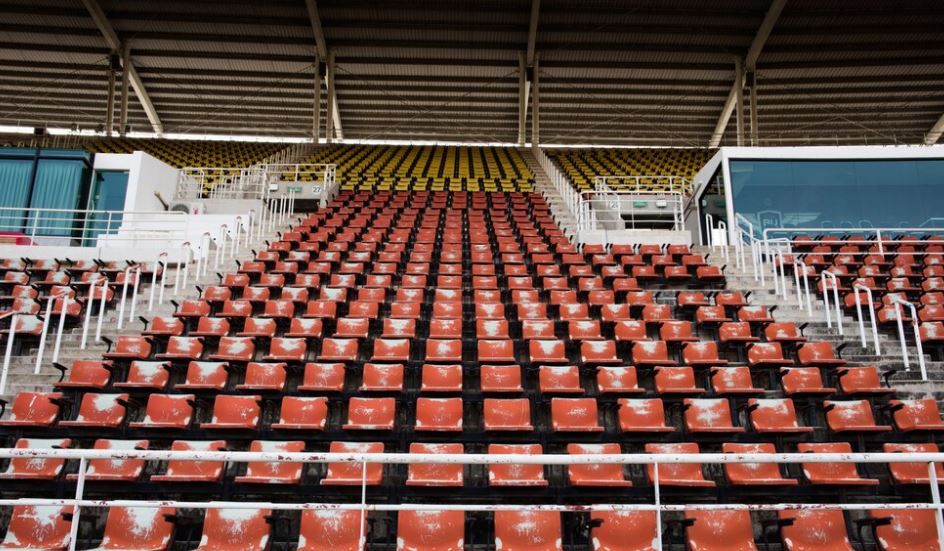For many years, Camp Nou has been a representation of football brilliance in the center of Catalonia. Barcelona’s iconic stadium is currently undergoing structural and symbolic changes for the future. Its capacity will increase to an incredible 105,000 seats following renovations, making it the third-largest football stadium in the world and the largest in Europe.
FC Barcelona is expanding not just its physical space but also the club’s essence by raising its capacity from 99,354 to 105,000. This significant renovation is a component of the broader “Espai Barça” renovation, which aims to update all of the club’s commercial and athletic facilities.
Camp Nou Renovation Table
| Feature | Details |
|---|---|
| Current Capacity (Pre-Renovation) | 99,354 |
| Planned Capacity (Post-Renovation) | 105,000 |
| Global Ranking (Post-Renovation) | 3rd Largest in the World |
| Project Name | Espai Barça |
| Estimated Cost | €1.5 billion |
| Return Date (Partial) | Spring 2025 (64,000 seat capacity) |
| Return Date (Full) | Summer 2026 |
| Temporary Stadium | Estadi Olímpic Lluís Companys (Capacity: 55,926) |
| Renovation Features | New third tier, solar panel roof, VIP rings, hospitality suites |
| Official Source | Camp Nou – Wikipedia |
Exceptionally Ambitious in Scope and Vision
More seats aren’t the only thing being renovated. The goal is to transform Camp Nou into a venue that combines entertainment, sustainability, and sports in a remarkably futuristic manner. The stadium will be self-sufficient and energy-efficient thanks to the installation of a new retractable roof with solar panels, setting the standard for stadiums of the future.
A 360-degree LED screen will also encircle the upper tiers, providing spectators with an incredibly engaging matchday experience. Barcelona is making sure Camp Nou doesn’t fall behind as digital storytelling becomes a crucial component of fan interaction.
Stress on the Budget, But Exceptionally Strategic
The club sees the estimated €1.5 billion price tag as a long-term investment, despite initial concerns. Barcelona plans to make up to €130 million a year by making money off of commercial establishments, VIP experiences, and hospitality lounges. For a club that has recently had to weather financial storms, that is especially advantageous.
Revenue from hospitality packages, which range from $49,000 to $94,000 per person, will be a major source of funding for the club’s overall business strategy over the next ten years.
Renovation Schedule: Postponements and Due Dates
At first, club officials hoped to reopen Camp Nou in time for the club’s 125th anniversary in November 2024. Due to delays caused by construction setbacks, such as problems installing the pitch and shortages of materials, that dream was put on hold for the time being.
Barcelona currently anticipates a partial comeback by the spring of 2025, with space for about 64,000 spectators. The stadium is expected to be completed by the summer of 2026 and reach its final capacity of 105,000. Over 800 seats are being installed every day, according to the most recent reports, and work is continuing around the clock, indicating a determined effort to keep on schedule.
Playing Outside of Home: A Short-Term Change
Barcelona has moved to Estadi Olímpic Lluís Companys while Camp Nou is being renovated. Despite the stadium’s 55,926 seats, the move has presented difficulties. Matchday atmospheres have noticeably lacked the same intensity, and season ticket holders were forced to modify their expectations.
Nevertheless, a historic future is being fueled by the momentary sacrifice. Fans will return by 2026 to a haven that has been upgraded with comfort, technology, and classic charm rather than just a stadium.
Modern Innovation Meets Architectural Marvels
The new Camp Nou will be used for more than just entertaining. The stadium, which was created by Nikken Sekkei and Joan Pascual-Ramon Ausió Arquitectes, will be a modern architectural icon. The project combines state-of-the-art technology with environmentally conscious design, as evidenced by its expanded VIP rings, office spaces, and recycled construction materials.
It’s a particularly creative model in the field of sports architecture, with a Catalan flair and inspiration from international projects like Allianz Arena and Tottenham’s new stadium.
Supporters Await, Club Advances
By means of meticulous preparation and unwavering implementation, the team is expanding the possibilities of what a football stadium can symbolize. President Joan Laporta has stressed in recent interviews that Camp Nou will be more than just a stadium; it will be a city inside a city, offering connected experiences to visitors, members, players, and supporters.
Even though supporters have occasionally voiced disapproval, particularly regarding seating arrangements and delays, the long-term goal is still hopeful.
The Home of Barcelona, Reimagined
The renovation of Camp Nou is about more than just building. It is the outward expression of Barça’s timeless identity as a club with a strong tradition but no qualms about changing. A legend will be reborn in 2026, and the thunderous cheers of 105,000 fans will reverberate far beyond football.
Barcelona is creating a future where modernity and heritage coexist—elegantly, powerfully, and permanently—in a world where modernity frequently triumphs over heritage.
FAQs
What is the new Camp Nou capacity?
105,000—making it the largest in Europe.
When will Camp Nou reopen fully?
Summer 2026 is the projected full return.
Where is Barcelona playing now?
At Estadi Olímpic Lluís Companys temporarily.
How much did the renovation cost?
Approximately €1.5 billion.
Will fans return before 2026?
Yes, partially—60,000 seats by mid-2025.

